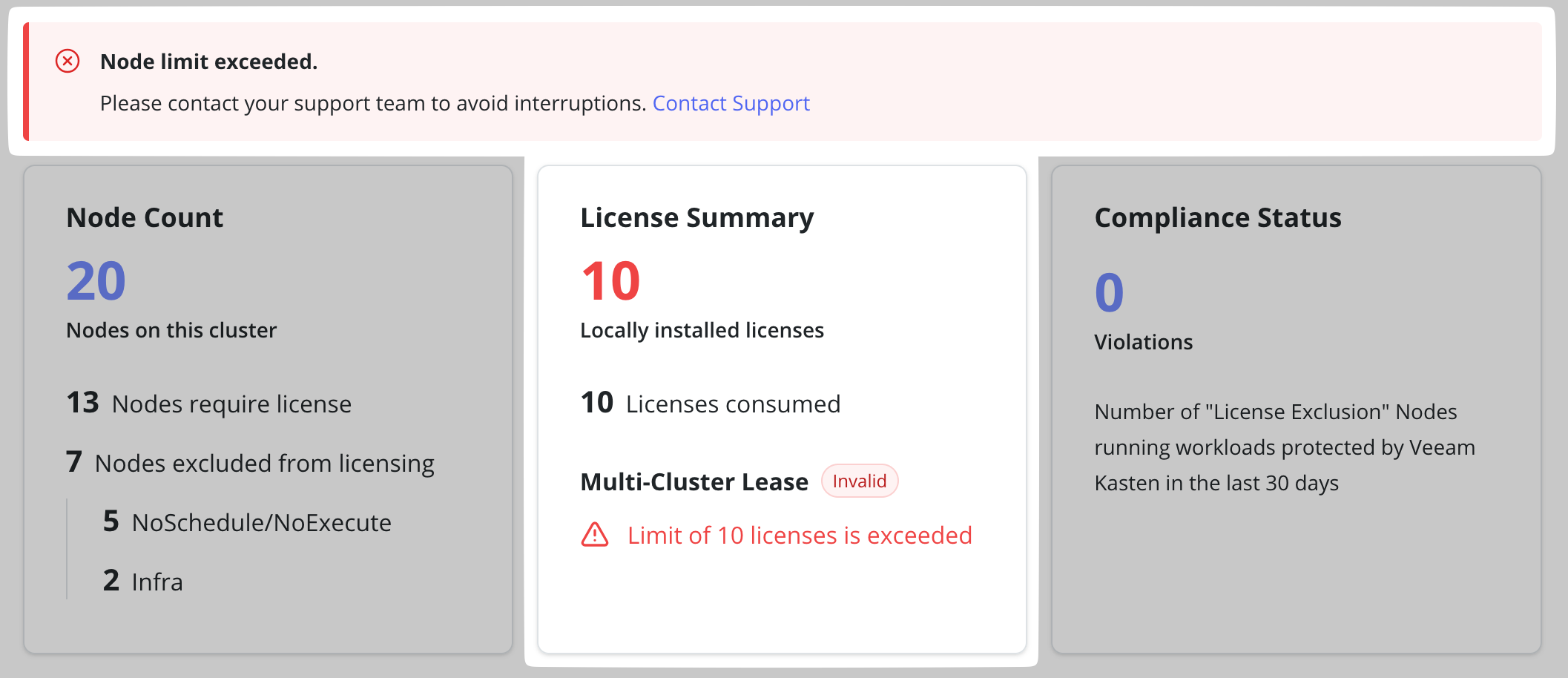License Management
Multi-Cluster Manager enables licensing all clusters in the same multi-cluster system with a single license. This can be achieved by installing a single license on the primary cluster, which will then distribute license leases to secondary clusters. Any excess license capacity from licenses installed on secondary clusters, will be contributed to a global pool of licenses maintained by the primary cluster.
With Multi-Cluster License Management, clusters require periodic communication with the primary cluster in order to remain licensed.
License Sharing Model
When Multi-Cluster license management is enabled, a cluster can contribute its excess license capacity to the Multi-Cluster license pool. The excess license capacity is calculated by subtracting the number of worker nodes in the cluster from the sum of the node limits of all valid licenses installed in the cluster. Clusters that do not have sufficient licenses will use the Multi-Cluster license pool to meet the licensing requirements.
E.g. [There are two clusters, A and B, in a Multi-Cluster system, with 4 and 5 worker nodes, respectively. A license for 10 nodes is installed in cluster A, and cluster B has no licenses. The 10 node license covers the 4 nodes in cluster A, and there is an excess license capacity of 6 (= 10 - 4) on this cluster. This excess license capacity can be leased by cluster B to meet its license requirement for 5 nodes. Both clusters are licensed with a single license in cluster A.]
Enabling Multi-Cluster License Management
To enable Multi-Cluster license management, the primary cluster needs to be setup with an ingress, which the secondary clusters are able to connect to.
If an ingress was not specified when setting up the primary, the ingress may be set by editing the Cluster resource directly. See Upgrading for details.
Multi-Cluster Lease
When Multi-Cluster license management is enabled, a Multi-Cluster Lease will be shown on each cluster's [Settings -> Licenses] page. This lease is valid for an hour, and clusters will connect to the primary cluster to renew the lease prior to expiry.
- Example lease of a cluster leasing from the Multi-Cluster license pool:

This cluster has 2 worker nodes, but does not have any valid licenses installed locally. The cluster is leasing 2 nodes from the Multi-Cluster license pool, to license its 2 worker nodes.
- Example lease of a cluster contributing to the Multi-Cluster license pool:
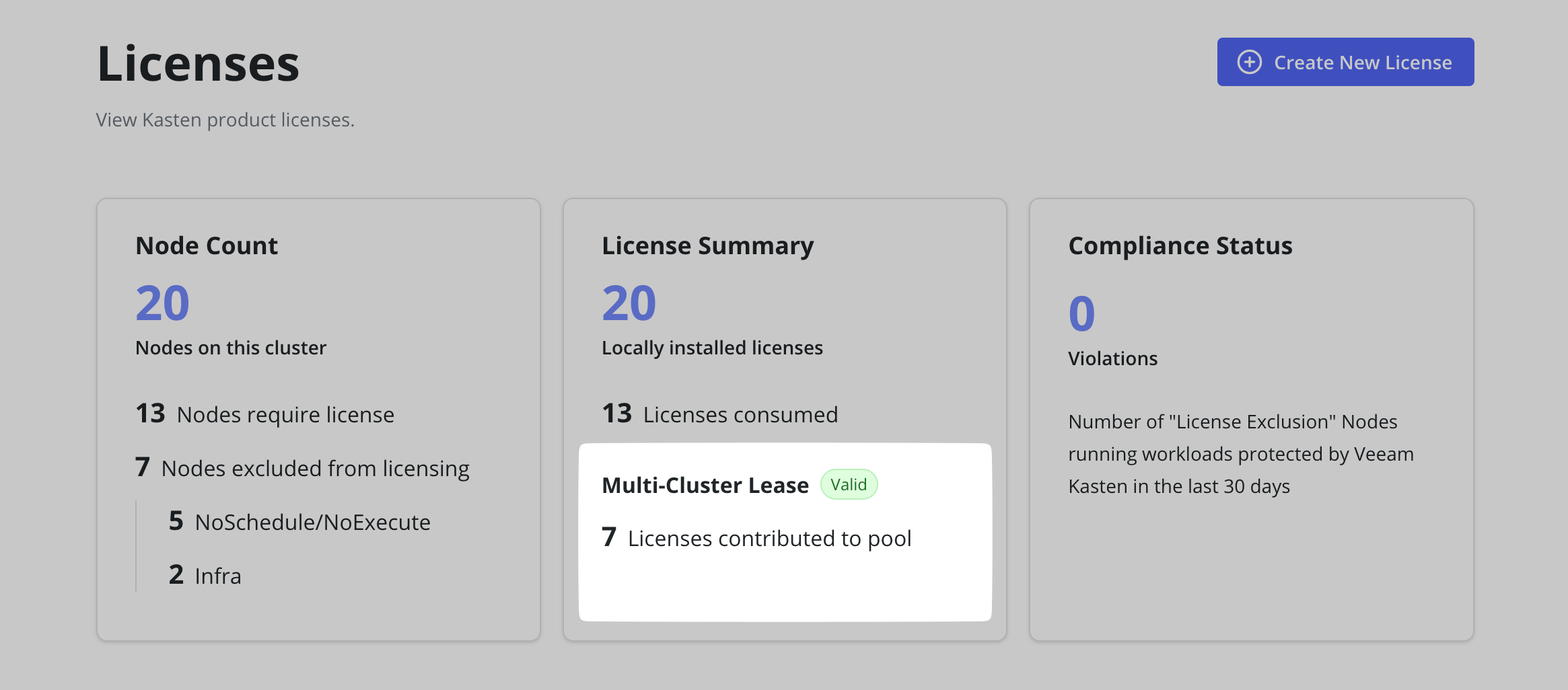
This cluster has 2 worker nodes and licenses installed locally for 100 nodes. The cluster is contributing excess license capacity of 98 (= 100 - 2) nodes to the Multi-Cluster license pool.
License Usage
Multi-Cluster Manager's Licensing page provides the cumulative
license capacity of the Multi-Cluster system, and the cumulative number
of worker nodes licensed in the Multi-Cluster system.
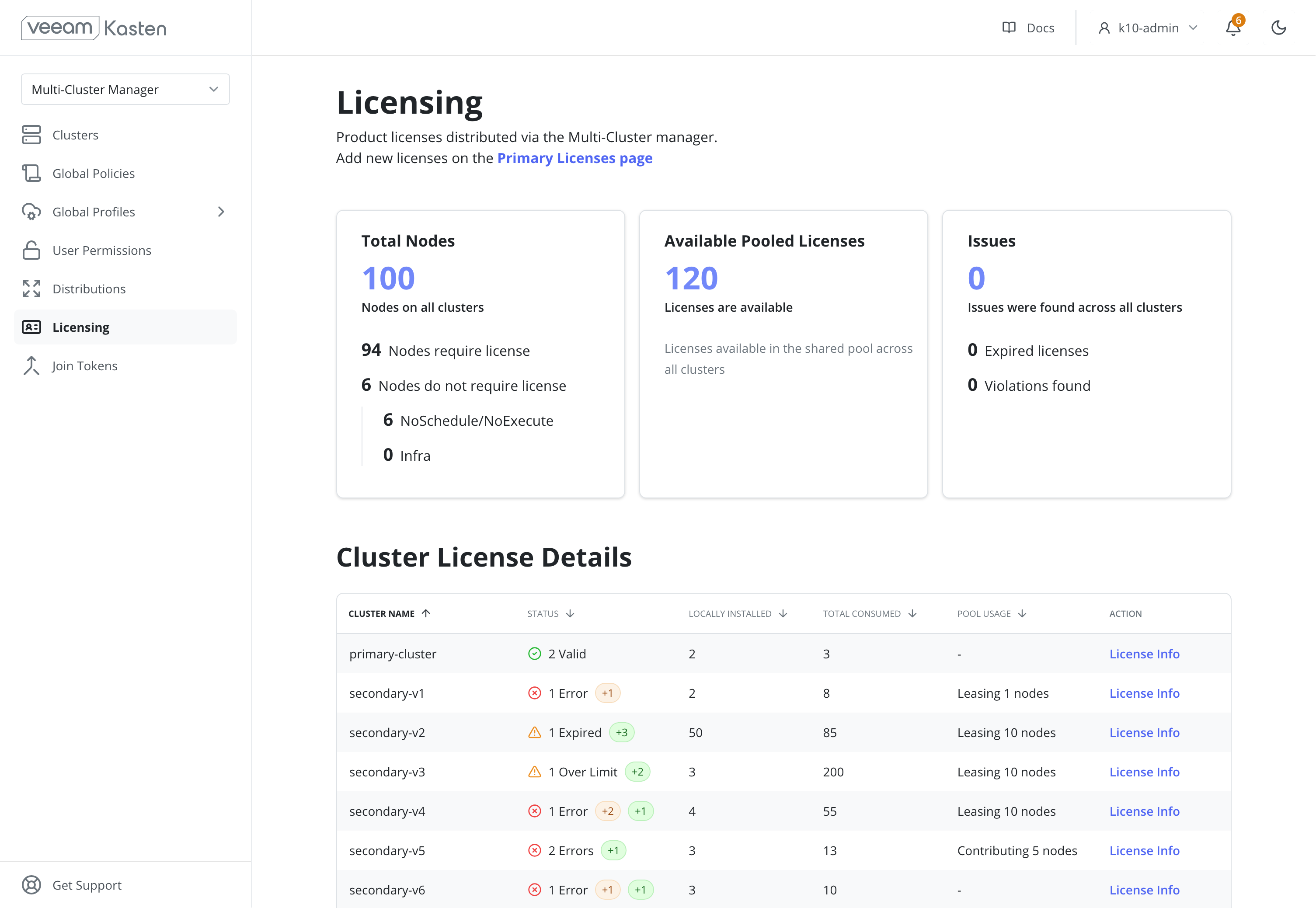
License capacity of this Multi-Cluster system is 100 nodes, and the sum of worker nodes in this Multi-Cluster system is
Multi-cluster Lease States
Updating
This indicates that the Multi-Cluster lease state is updating. This state should transition to a different state within minutes.
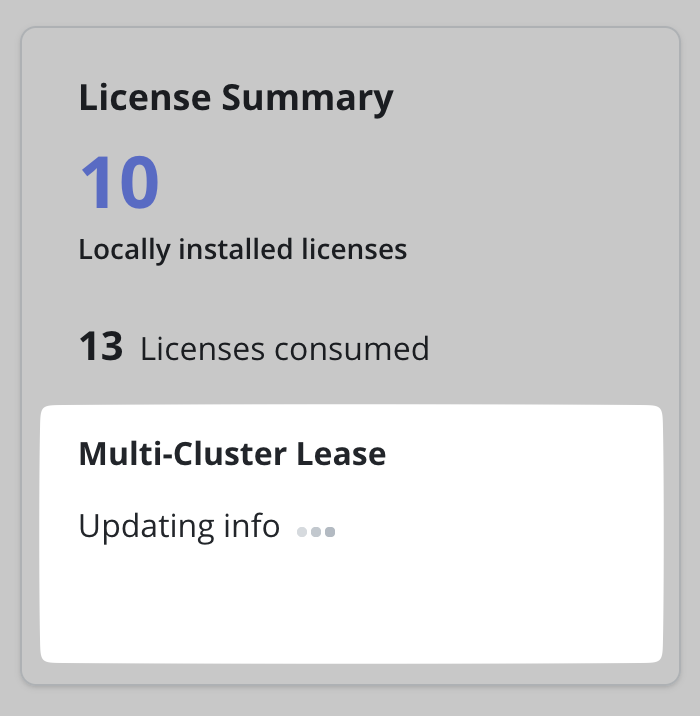
Valid
Multi-Cluster lease is valid, and cluster meets the license requirements.
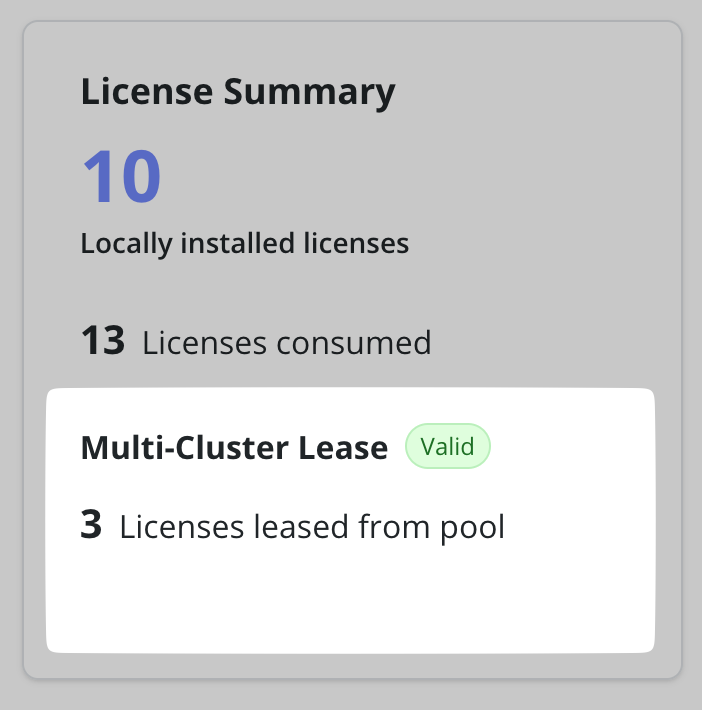
Expired
Multi-Cluster lease has expired. This indicates that the cluster was not able to connect to the Multi-Cluster license manager in the primary cluster to renew its lease. Please verify the cluster is able to connect to the primary.
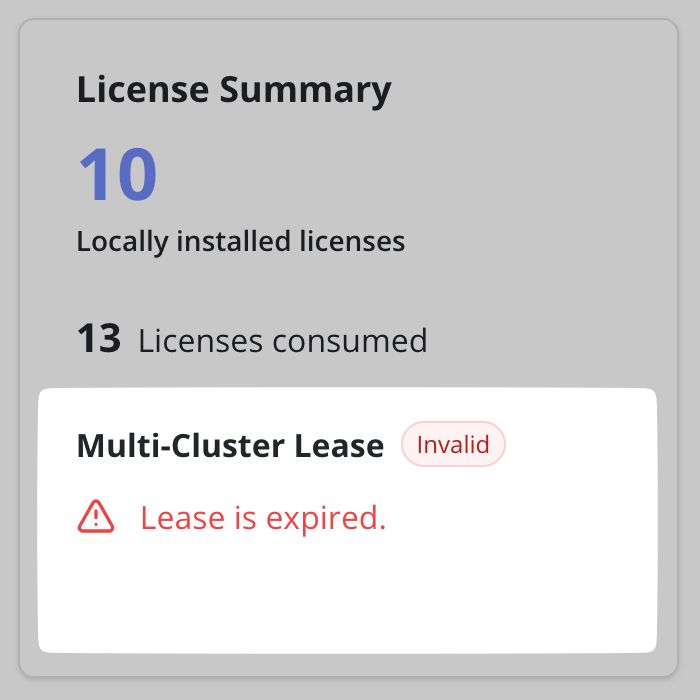
Limit Exceeded
The Multi-Cluster lease is insufficient to license the nodes in the cluster. Please contact Kasten through your account contact or at contact@kasten.io.
